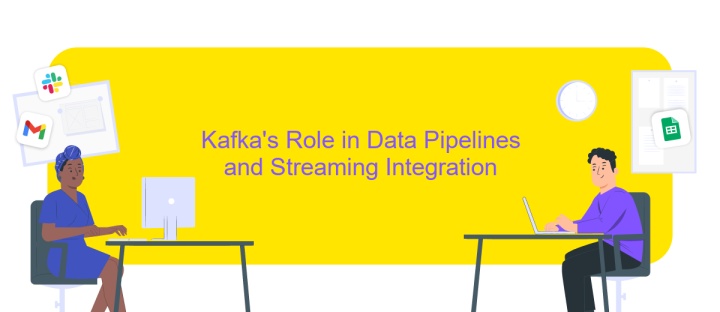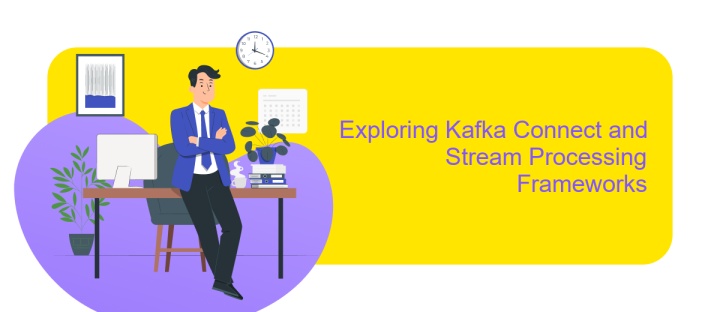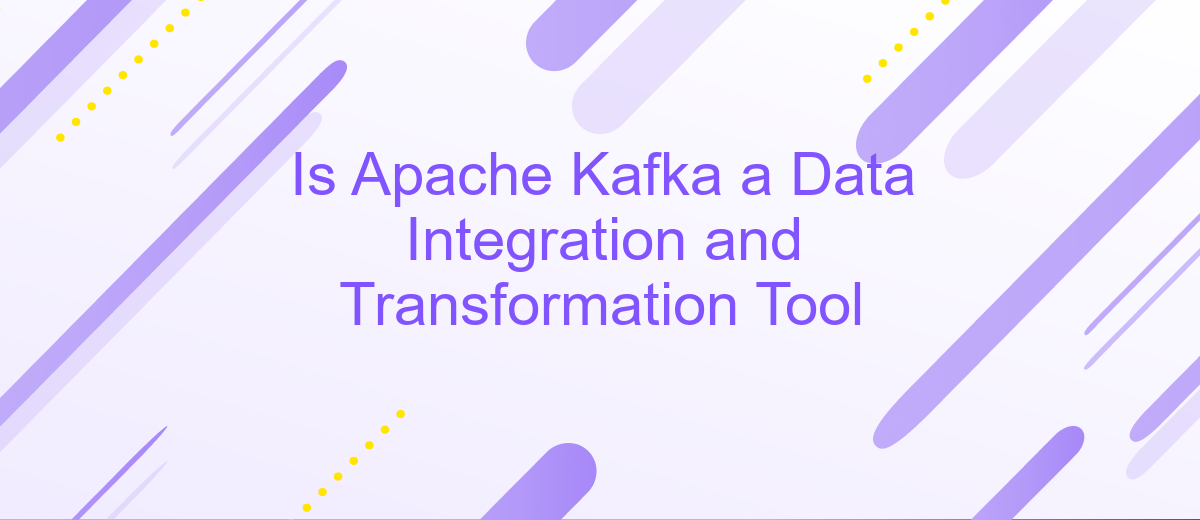Is Apache Kafka a Data Integration and Transformation Tool
Apache Kafka is often recognized as a robust platform for real-time data streaming, but its capabilities extend beyond mere message brokering. This article explores whether Kafka can be classified as a data integration and transformation tool. By examining its architecture, features, and use cases, we aim to understand how Kafka fits into the broader landscape of data management and processing solutions.
Understanding Data Integration and Transformation
Data integration and transformation are crucial components in managing the flow of information across diverse systems within an organization. Data integration involves combining data from different sources to provide a unified view, while transformation refers to the process of converting this data into a desired format or structure. Together, they enable businesses to harness data effectively for analysis, decision-making, and operational purposes.
- Data integration ensures consistency and accessibility across various platforms.
- Transformation processes clean and standardize data for better usability.
- These processes support real-time analytics and reporting needs.
- They facilitate seamless communication between disparate systems.
- Effective integration and transformation enhance data quality and reliability.
By leveraging data integration and transformation, organizations can break down silos and ensure that accurate, timely information is available to stakeholders. This not only improves operational efficiency but also provides a competitive edge by enabling data-driven strategies. Understanding these processes is essential in today's data-centric world, where the ability to quickly adapt and respond to changing business needs is paramount.
Introduction to Apache Kafka and its Core Capabilities

Apache Kafka is an open-source distributed event streaming platform designed for high-throughput and low-latency data processing. Originally developed by LinkedIn, Kafka has become a cornerstone for real-time data pipelines and streaming applications. Its core architecture is based on a publish-subscribe model, allowing producers to send messages to topics, which are then consumed by subscribers. This decoupling of data producers and consumers enables Kafka to handle vast amounts of data efficiently, making it ideal for scenarios requiring real-time analytics, log aggregation, and data integration.
One of Kafka's standout capabilities is its ability to serve as a robust data integration tool. It seamlessly connects disparate data sources and sinks, facilitating smooth data flow across systems. Kafka's Connect API further enhances its integration prowess by offering pre-built connectors, simplifying the task of linking various data systems. For organizations looking to streamline their data integration processes, services like ApiX-Drive can complement Kafka by automating the setup of these connections, reducing the complexity and time required to achieve seamless data integration. Together, Kafka and tools like ApiX-Drive empower businesses to harness the full potential of their data ecosystems.
Kafka's Role in Data Pipelines and Streaming Integration

Apache Kafka plays a pivotal role in modern data pipelines and streaming integration by providing a robust platform for real-time data processing. As organizations increasingly rely on data-driven insights, the need for seamless data flow across various systems becomes critical. Kafka excels in handling large volumes of data with low latency, making it an ideal choice for integrating disparate data sources and ensuring data consistency across the enterprise.
- Real-time Data Ingestion: Kafka efficiently ingests data from multiple sources, allowing businesses to process information as it arrives.
- Scalability: Kafka's distributed architecture ensures that it can handle growing data volumes without compromising performance.
- Fault Tolerance: With its replication capabilities, Kafka guarantees data availability even in the event of node failures.
- Stream Processing: Kafka integrates seamlessly with stream processing frameworks, enabling real-time analytics and decision-making.
By serving as a central hub for data streams, Kafka facilitates the integration of various applications and systems. Its ability to process and route data in real-time empowers organizations to build dynamic, responsive data architectures. This flexibility not only enhances operational efficiency but also supports innovative use cases, such as IoT data processing and real-time customer interactions, positioning Kafka as a cornerstone of modern data infrastructure.
Exploring Kafka Connect and Stream Processing Frameworks

Apache Kafka, widely recognized for its robust messaging capabilities, extends its functionality with Kafka Connect and stream processing frameworks. Kafka Connect simplifies the integration of various data sources and sinks, enabling seamless data flow across systems. It provides a scalable and fault-tolerant solution for ingesting data into Kafka topics and exporting it to external systems, reducing the complexity of data pipelines.
Stream processing frameworks, such as Kafka Streams and Apache Flink, empower developers to process and analyze data in real time. These frameworks allow for the transformation and enrichment of data as it flows through Kafka, enabling businesses to derive actionable insights promptly. By leveraging these tools, organizations can build sophisticated data processing applications that respond to events as they occur.
- Kafka Connect: Facilitates easy integration with external systems.
- Kafka Streams: Offers a lightweight library for stream processing.
- Apache Flink: Provides advanced capabilities for complex event processing.
Incorporating Kafka Connect and stream processing frameworks into your data architecture can significantly enhance your ability to handle real-time data integration and transformation tasks. These tools not only streamline data workflows but also ensure that your systems are responsive and adaptable to changing data landscapes.
- Automate the work of an online store or landing
- Empower through integration
- Don't spend money on programmers and integrators
- Save time by automating routine tasks
Evaluating Kafka as a Data Integration and Transformation Solution: Benefits and Limitations
Apache Kafka has emerged as a robust platform for data integration and transformation, offering several benefits. Its distributed architecture ensures high availability and scalability, making it suitable for handling large volumes of data in real-time. Kafka’s ability to decouple data streams allows for seamless integration across various systems, enhancing data consistency and reliability. Additionally, its support for stream processing frameworks like Kafka Streams and integration with tools such as ApiX-Drive simplifies the setup of complex data pipelines, enabling businesses to automate and streamline their data workflows efficiently.
However, Kafka is not without its limitations. While it excels in real-time data processing, it may not be the best choice for scenarios requiring complex transformations or data storage, as it primarily focuses on data streaming. Setting up and maintaining a Kafka cluster can be resource-intensive, requiring specialized knowledge and expertise. Furthermore, ensuring data security and managing access controls can be challenging, necessitating additional tools and configurations. Despite these challenges, Kafka remains a powerful tool for organizations seeking to enhance their data integration capabilities.
FAQ
Is Apache Kafka a Data Integration and Transformation Tool?
Can Apache Kafka be used for data transformation?
What are the key features of Apache Kafka for data integration?
How can I automate data integration with Apache Kafka?
Is Apache Kafka suitable for batch data processing?
Do you want to achieve your goals in business, career and life faster and better? Do it with ApiX-Drive – a tool that will remove a significant part of the routine from workflows and free up additional time to achieve your goals. Test the capabilities of Apix-Drive for free – see for yourself the effectiveness of the tool.


